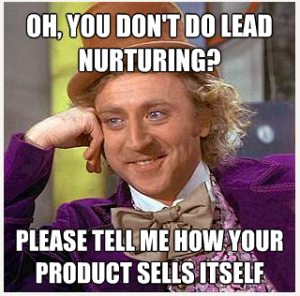Key Considerations For a Successful Email Drip Campaign
 What are the key considerations you should make when implementing a successful email drip campaign? Email drip campaigns can really boost your lead nurturing program. But it’s not as easy simply blasting a sales letter to your database of leads. Here are some ideas for creating a winning email drip campaign.
What are the key considerations you should make when implementing a successful email drip campaign? Email drip campaigns can really boost your lead nurturing program. But it’s not as easy simply blasting a sales letter to your database of leads. Here are some ideas for creating a winning email drip campaign.
Gain permission to maintain contact
I put this as the top priority of any lead nurturing program. It is especially important for email drip campaigns because you can quickly earn a bad online reputation if prospects throw you into the spam folder. Make sure to repeatedly ask for permission to contact prospects. Providing an opt-out feature is essential; it reduces negative impact and minimizes wasted effort for the rest of the drip campaign.
Decide time frame
Lead nurturing requires time to be effective but managing your response rate should be done using a defined period, such as 30 days or 3 months. Buying cycles vary for different products and services, different industries, and among different companies. It’s important to plan the duration of each campaign, because it will be easier to determine how many contacts should be made within the time frame.
Set a schedule
Within the time frame will be scheduled releases, drip releases should be set at intervals no more frequently than 4-7 business days. Staging email drips too frequently may result in a spam designation; too rare and you risk losing your prospect to a competitor. Timing is important to lead nurturing success; therefore it’s a good idea to invest time into setting a proper schedule for your markets.
Determine content for each message
A successful campaign isn’t built on repeating previous messages, with the hope that your prospect will eventually open the email after feeling a sense of familiarity with the sender or subject line. Each contact should be part of a progression that builds interest. The level of engagement through content should increase each time a response to a “drip” is made.
Decide who should write
A winning email drip campaign is not about trotting out hackneyed marketing phrases. The keys to an effective lead nurturing process are fresh messaging, response generation, and timely contacts. Your content provider impacts messaging and response, and not all marketers or salespeople write good copy. If there are no good options internally, consider hiring a professional copywriter. Email, like most channels, is overstuffed with messages that are often tuned out, so – when choosing a content provider – make sure she understands your market’s buying behavior and knows how to build a relationship.
Build a landing page
For each lead nurturing attempt there should be links embedded that direct interested parties to a landing page. Lead nurturing builds towards deeper engagement, so if a prospect clicks a link within an email, there is a prime opportunity to increase engagement. Prospects should land on a page that requires them to fill out a form for more information. And the landing page should contain new details that support the information in the email message in order to move your prospect deeper into the sales funnel.
Review responses rates to each message
During the drip campaign, monitor the results of each release. Using Lead Liaison’s Send and Track tool, for example, you can easily see who opened the message, when it was opened, and what, if any, actions were taken. It’s important to review the effectiveness of your lead nurturing both during and following the email campaign.











